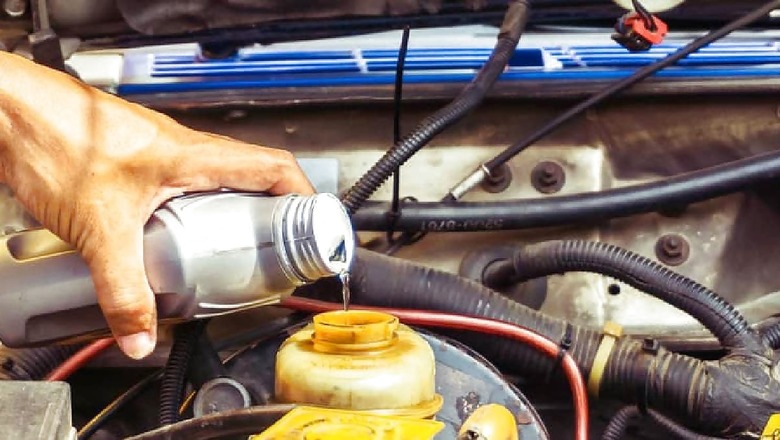
views
When driving a four-wheeler, it is very important to take care that the brakes are well cared for and it should be a high priority for any driver.
However, it is very important to understand how brakes work, the role of the brake fluid, and also the significance of flushing brake fluid from time to time.
The brakes on the car function with the use of a hydraulic system that requires a special fluid. This fluid is thick and functions under high pressure to keep the brakes responsive.
When functioning normally, the fluid remains clear and pure which creates ideal braking conditions for the vehicle by utilising hydraulic pressure, as reported by Autozone.
However, with time, the fluid often becomes contaminated by water, air and rust that get into the system, making it turn old and discoloured due to overheating. If left unchecked, these brake fluids can also result in spongy and unresponsive brakes.
To get rid of the old and contaminated brake fluid, it is important to flush it entirely, which involves flushing out the brake system and filling the master cylinder again with fresh fluid. It is generally recommended drivers have their brakes flushed every 2 to 3 years to make sure that the systems are well taken care of.
How To Flush Brake Fluid?
While performing a brake fluid flush is an easy task just like changing oil, one should properly know the process. You can also take the car to your trusted mechanic for professional help.
Fluid Removal Methods
The first step is to completely remove all the old fluid that is inside the master cylinder reservoir. This can be done in a number of ways including a large syringe, turkey baster, small siphon pump, or using a transfer pump and tube can. All of these can help to easily remove all the fluid from the reservoir while the car is off and in the park, with no pressure on the brakes.
Refresh Brake Fluid with Clear Tubing
After emptying the reservoir, fill it up with fresh fluid. From this onwards, the process is no different than bleeding brakes. To make the process easier, keep a small, 2-foot section of clear tubing to fit over the bleeder crew. This will help to see if the old fluid has been completely removed.
Clear Fluid Signals Flush Success
Upon completely filling the fresh fluid, simply start at the rear of the car first, and bleed out the 2 rear calipers/wheel cylinders. Note that drivers will be able to know when the old, rusty and brown fluid has all been removed and the clear fluid is flowing through the tube.
Monitor Reservoir Levels
Next, move to the fronts. After each wheel is bled, make sure to re-check the master cylinder reservoir.
Refill Reservoir
After the last wheel, fill the reservoir back to the fill line.













Comments
0 comment